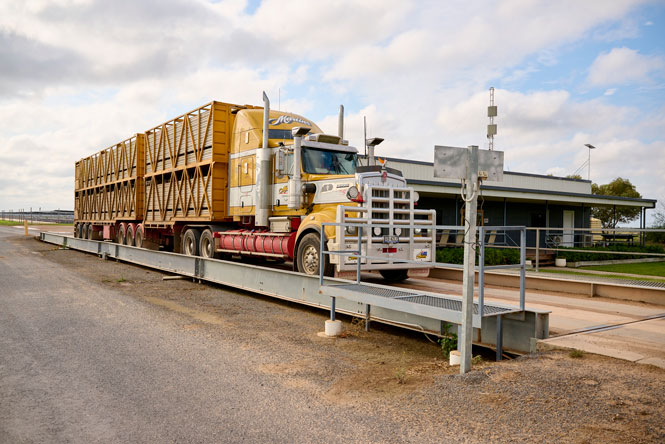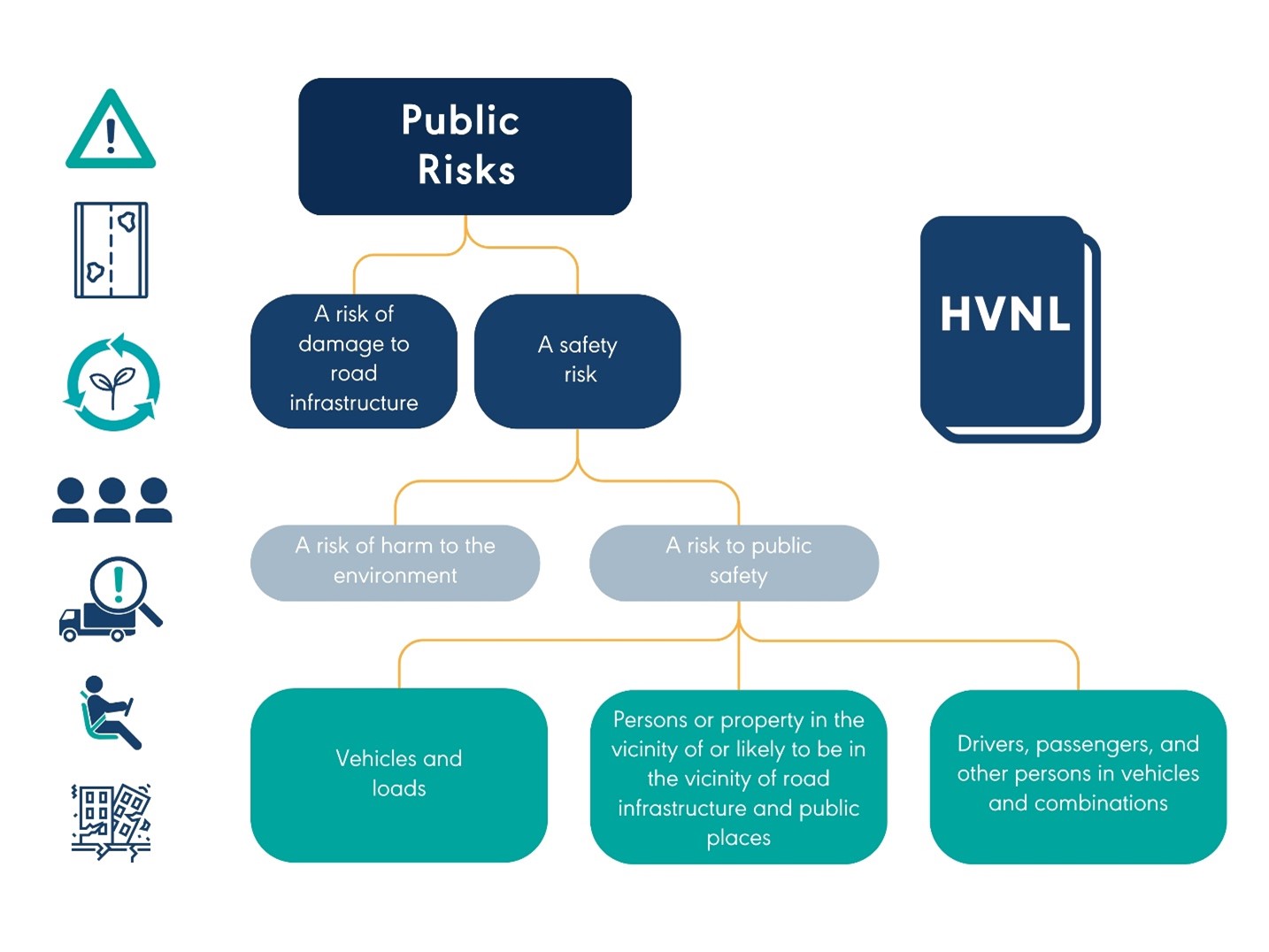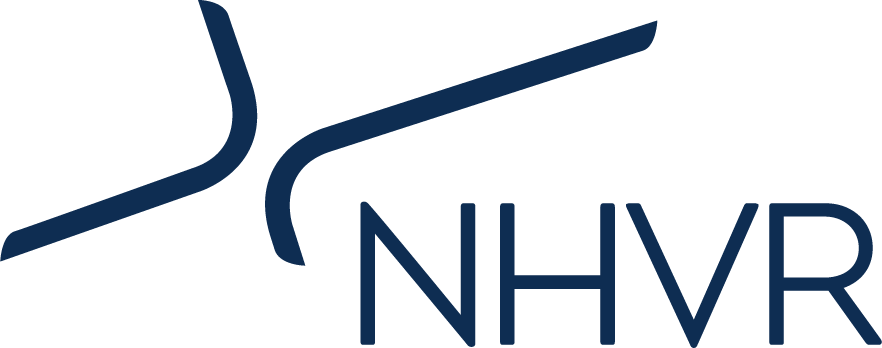Regulatory Advice - Chain of Responsibility for Owners and Operators of Weighbridges
Regulatory Advice - Chain of Responsibility for Owners and Operators of Weighbridges
National
Heavy
Vehicle
Regulator
Note: This information is intended to provide general guidance only and does not constitute legal advice. We encourage you to obtain independent advice about your legal obligations. If you have any feedback on the information provided please contact us at info@nhvr.gov.au
This regulatory advice provides guidance on obligations for parties in the Chain of Responsibility (CoR parties) who own or operate weighbridges to ensure safety and mass compliance in line with their primary duty and outlines expectations of what may be considered reasonably practicable actions. The Heavy Vehicle National Law (HVNL) includes other requirements regarding mass, however this advice focuses exclusively on primary duty obligations.

Background
The National Heavy Vehicle Regulator (NHVR) has received enquiries and feedback from weighbridge owners and operators who are parties in the Chain of Responsibility (CoR) about what is required of them to meet their primary duty. Particularly, these parties have sought advice on what the NHVR considers to be reasonably practicable actions they must take to ensure transport safety in relation to heavy vehicle mass compliance.
Discussions with industry have shown that many businesses may have excessive measures in place as they believe they are required to police the mass of every load, and failing to do so will leave them liable for a mass breach. It appears that these types of excessive practices are a left over from pre-2018 CoR requirements that applied an extended liability approach.
Is my business a CoR party if it owns/operates a weighbridge?
Businesses are CoR parties because they perform one of the defined CoR functions. Having a weighbridge is not one of those functions, so not every business with a weighbridge will be a CoR party. However, many businesses that operate weighbridges are CoR parties because they send or receive goods on heavy vehicles or own or manage premises where heavy vehicles are loaded or unloaded.
When is a business a CoR party?
There are 10 defined parties in the Chain of Responsibility. A business is a party in the CoR when it or its employees perform any of the following 10 functions:
- employ a heavy vehicle driver (employer)
- engaging a self-employed driver of a heavy vehicle under a contract for services (prime contractor)
- direct the control and use of a heavy vehicle (operator)
- schedule the transport of goods and passengers in a heavy vehicle, or schedule a driver’s work and rest hours (scheduler)
- consign goods for transport by a heavy vehicle (consignor)
- receive goods delivered by a heavy vehicle (consignee)
- pack or assemble goods for transport in a heavy vehicle (packer)
- manage premises where five or more heavy vehicles are loaded or unloaded each day (loading manager)
- load a heavy vehicle (loader)
- unload a heavy vehicle (unloader)
What are my legal obligations under the HVNL if my business is a CoR party?
Safety is broadly defined broadly defined in the HVNL to include public risks.

Mass and the primary duty
Ensuring compliance with mass requirements is part of the primary duty. This is because the definition of public safety includes prevention of damage to road infrastructure. Overloaded vehicles can damage roads and cause excess stress to bridges and other infrastructure leading to costly unscheduled repairs and maintenance and/or premature replacement of road assets.
Overloaded vehicles can also have an impact on the vehicle’s steering and braking capability and in the event of a collision a heavier vehicle can cause greater damage. Overloading can impact the heavy vehicle’s continued roadworthiness or cause accelerated wear and tear on vehicle components which may impact onboard safety systems.
What does my business have to do to ensure public safety and manage public risks when operating a weighbridge?
One of the most effective ways for CoR parties in the heavy vehicle supply chain to manage the safety of weighbridge operations is to ensure that they are implementing systems from the outset that promote safe and compliant behaviours.
This includes implementing systems, policies, and procedures that set expectations for business partners, and providing clear guidance on how workers should manage weighbridge operations including training workers on what to do when a vehicle presents over mass, as well as allocating resources to ensure thorough records can be obtained upon weighing.
In all instances weighbridge owners/operators should:
- ensure weighbridges and surrounding areas are maintained in good working order
- ensure weighbridges are calibrated to relevant standards
- ensure staff are properly trained in the operation of weighbridge equipment and weighing processes
- where possible, provide a safe area and equipment for loads to be adjusted/corrected.
Businesses operating weighbridges which load and send goods
When loading and sending heavy vehicles from your premises you are the CoR party that has the first and most significant opportunity before the heavy vehicle commences its journey to ensure safety and compliance.
Measures to ensure safety and that heavy vehicles are not overloaded when departing your premises may include:
- Asking transport operators to confirm, where possible in advance, the permissible mass limits for each heavy vehicle/combination being loaded at your premises.
- Communicating mass information to all relevant staff including loading staff, and keeping records of this information at the weighbridge.
- Providing workers operating weighbridges with information and training on general mass limits so they can identify vehicles which may be overloaded.
- Weighing all heavy vehicles prior to departure and assessing their mass against the limits provided by the transport operator.
- Providing drivers, operators and other relevant parties with documentation confirming the vehicle’s mass at departure.
- Implementing processes to ensure Operators receive weighbridge data on vehicles they own on a regular or ongoing basis, with priority reporting of overloaded heavy vehicles in real time.
- Providing drivers with the opportunity to correct mass non-compliance when detected prior to departure in a safe area with suitable equipment.
- Notifying workers involved in loading of instances of non-compliance.
- Communicating expectations and working with business partners to promote safety and compliance.
- Making and keeping appropriate records.
- Auditing a sample of information provided by transport operators about mass limits to confirm accuracy. This may include requesting copies of permits, vehicle approvals, and certifications.
More information on loading vehicles can be found in Regulatory Advice – Loading and load restraint
Businesses operating weighbridges which receive, and unload goods
As a receiver your main control measure to ensure safety and promote compliance will be monitoring, information sharing, and using contractual terms to influence the behaviours of your business partners.
Measures to ensure that heavy vehicles are not overloaded when they arrive at your premises may include:
- Recording and retaining details of all heavy vehicles being weighed on arrival including:
- registration number(s)
- combination type
- date and time of arrival
- gross and axle mass
- load type/commodity being carried.
- Requiring regular business partners to confirm the permissible mass limits of vehicles that deliver goods/commodities to your premises and providing this information to workers operating weighbridges.
- Communicating weighbridge data back to transport operators and other parties.
- Reporting incidents of non-compliance and inconsistencies between the mass of the same goods or commodities to transport operators and other parties. For example, the same heavy vehicle arriving with the same commodity multiple times a week but with vastly different masses on arrival.
- Implementing contractual terms that set clear expectations of safety standards and mass compliance, particularly for ongoing business relationships. For example, terms highlighting the expectations on information sharing on vehicle mass and how non-compliance will be managed.
- Providing workers operating weighbridges with information and training on general mass limits so they can identify vehicles which may be overloaded.
- Requesting information from transport operators to confirm the notified mass limits of a sample of inbound heavy vehicles.
With one-off or infrequent business partners, you have less opportunity to ensure that heavy vehicles are not overloaded, however you can still set expectations in advance by:
- Communicating your expectations, policies and procedures to all businesses by publicly displaying them at the entry to your premises, on your business website and on social media pages.
More information on receiving loads can be found in Regulatory Advice – Managing the risks associated with non-compliant heavy vehicles arriving at premises.
Heavy vehicle operators
Heavy vehicle operators have the responsibility to know the mass limits of every heavy vehicle/combination in their fleet. This information should be provided to drivers and where possible to business partners in advance, particularly if those businesses load the vehicle, or weigh it on departure or arrival.
Heavy vehicle operators must remain vigilant in complying to applicable mass limits and empower drivers to deny requests from other parties to overload heavy vehicles.
Will my business be liable if a heavy vehicle is overmass and allowed to enter or leave my premises?
You will not be automatically liable for another party’s heavy vehicle being over mass simply because it was weighed at your premises. However, that does not mean you have no responsibility. As a CoR party you must do everything reasonably practicable to ensure heavy vehicle safety and compliance. The abovementioned measures are examples of what may be reasonably practicable.
What does my business have to do when there’s an indication that a heavy vehicle on the weighbridge is overmass?
As a CoR party you are required to do everything reasonably practicable to ensure public safety for heavy vehicles on the road. This does not mean unreasonably refusing entry to heavy vehicles or forcibly preventing heavy vehicles from departing your premises because there is an indication they are in breach of mass limits.
In most circumstances it would be reasonable to:
- inform the driver of the heavy vehicle’s mass
- highlight the mass breach if there is an indication the heavy vehicle is exceeding mass limits
- if possible, provide an opportunity for the mass to be corrected
- record the details of the heavy vehicle and share the information back to the transport operator.
If the transport operator displays a pattern of non-compliance you may also wish to report them to our Heavy Vehicle Confidential Reporting Line (HVCRL).
Note: If the continued use of the vehicle poses an imminent and serious safety risk (such as a severely overloaded vehicle causing load spillage onto the road) you may need to report the situation immediately to the vehicle’s operator or, in extreme cases, to the NHVR or police. You may also need to direct the driver to a nearby location where they can safely wait for assistance to arrive.
THIS DOCUMENT IS UNCONTROLLED IN HARD COPY FORMAT

 Accessibility tools
Accessibility tools

